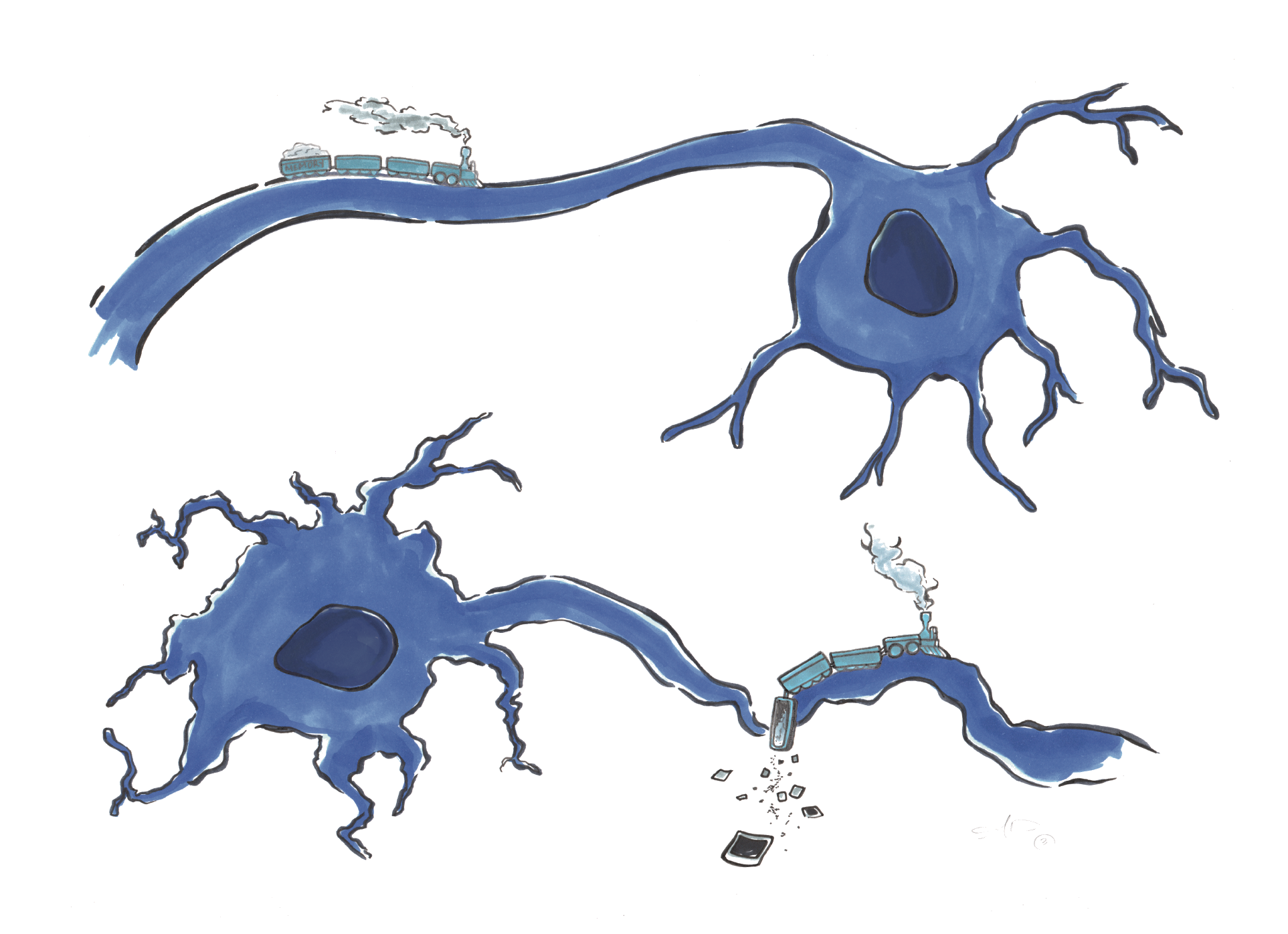Alzheimer’s and Identity
It’s easy to take ourselves for granted. Identity is something we rely on for our entire lives, whether it is used to express and describe ourselves or take a stance on controversial issues. Alzheimer’s disease (AD) is a disease that, as it progresses, affects areas of the brain dedicated to memory, problem solving, abstract thinking, learning capabilities, personality, and awareness [1] . The faculties it targets results in a loss of identity and an inability to interact with others. Exploring identity alongside Alzheimer’s disease will shed light on what we consider to be most crucial to our sense of self. Before we understand how AD affects one’s identity, however, we must first discuss what identity is.

What is Identity?
A study conducted by Nina Strohminger and Shaun Nichols asked people what they thought constituted their identities [2] . Many people associated themselves with their interests, while others associated themselves with personality. However, only 31% of people agreed that interests determine identity, and 45% of people agreed that personality determines identity. Furthermore, perception of qualia, or the way one perceives the world, was the least impactful, with only 29% percent of people saying that the way they viewed the world affected their identity [2] .
For participants in the study, memory played a larger role in determining identity compared to interests, personality, and perception [2] . This is consistent with a theory called psychological continuity, the notion that the “self” relies on episodic memory [3] . This theory began as an argument for the existence of a soul and remains prevalent today. It implies that in order to have a consistent identity, people must remember their entire lives. Without memory, the world would be an endless stream of information that we would constantly have to re-learn to understand. However, for the majority of people, memory is not the defining factor of identity because it is impossible to remember our entire lives. While certain major events shape our lives, our identities are generally unaffected if we forget an everyday event. To find a more important factor, participants in the survey needed to look further into what they believed to be most vital to their identities.
For participants in the survey, morals proved to be the most important factor. Morals shape our lives and our conduct in various environments [4] . One’s set of morals affects behavior and social decisions, and shared values are the basis for personal identity and the ability to belong to unique groups. People choose their mates based on the morals of the other person, and they will act in ways that comply with their own morals. Morals are based on the social constructs of a person’s community; they convey what that person determines is correct or “right.”
Religion is deeply rooted in morals, providing an important example of how people associate morals with the most essential and pure parts of themselves. There are many communities that have their own sets of “mores,” such as religions, political parties, and even gangs [4] . Because a set of morals is based on one’s affiliations and judgment of what is right, it differs between individuals. One person’s set of morals could include showing compassion to all, while another might have a moral trait that encourages stealing. Both people believe they are doing the right thing and use their personal mores to justify their actions, whether or not that is the universal opinion. The importance of morals to human behavior explains why Strohminger found morality to be the most important aspect of identity and the one we are most afraid to lose [2] .
Why Alzheimer’s?
Alzheimer’s disease emphasizes the aspects of identity we find most important because as soon as the disease targets certain areas of the brain, we lose the corresponding faculties. Many people with AD fear losing their independence, belief systems, and memory when they reach the middle stages of the disease. Because the exact cause of AD is still unknown, it is impossible to warn anyone before the diagnosis. However, we do know that there are two physical changes to the brain that accompany the onset of Alzheimer’s. AD can be recognized by an accumulation of a protein called beta-amyloid and the neurofibrillary tangles of a protein called tau [5] . A buildup of beta-amyloid plaques around neurons in the AD brain disrupts synaptic signaling, and neurons that are unable to communicate die, creating large pathways of dead cells. Unlike beta-amyloid, tau is abundant in the healthy brain. Tau’s primary function is to support the microtubules within neurons that allow for the internal transport of nutrients and other essential molecules. As AD advances, the tau protein causes microtubules to collapse, leading to tangles, and the nutrients lose their way through the transport system like a train that falls off of the tracks [5] .

The earliest stage of AD affects memory and concentration. As the disease spreads throughout the brain, patients begin to have difficulty expressing their thoughts and performing mundane tasks, which is known as middle stage AD. Further deterioration of neural cells and the myelin sheaths surrounding the axons slow down cell signaling and compromise the patient’s ability to react and respond to stimuli [5] . Finally, in late stage AD, patients lose all ability to control their responses to stimuli. They are unable to perform any routine tasks and need vigilant care. During this deterioration, what is unclear is when and if the identity of the patient is lost.
Losing Ourselves
To answer the question of whether Alzheimer’s disease truly takes away one’s identity, we must consider whether morals, the key factor of identity, are lost in patients with AD. We know AD leads to loss of episodic memory, motorfunction, and sometimes the ability to monitor social situations and act appropriately [1] . These changes make the person a shadow of who they once were. But does this constitute a loss of identity?
Strohminger and Nichols conducted another study in 2015, which surveyed 248 families and caretakers of neurodegenerative disease patients [6] . They discovered that when moral judgment was compromised, families felt that the identity of their loved one was also compromised. While the symptoms and effects of AD differ from patient to patient, family members noticed that a change in morals was more significant than memory loss, personality change, loss of intelligence, or inability to do daily tasks. The moral compass seemed to be the last piece of identity to disappear. When patients finally do lose their morality, however, their families are no longer able to recognize them as the same person [6] .
It is when morals start to slip away that AD truly takes hold of identity. By looking at a disease that so thoroughly targets the assumptions we have about the composition of identity, we can discover what we consider most important about our sense of self. Morals represent the last vestiges of the loved ones whom we must let go. Looking forward, we should focus on ways to extend the moral capabilities of AD patients and start exploring the physiological basis of identity loss in AD patients.
References
- 2017 Alzheimer’s Disease Facts and Figures. (2017). Retrieved from: http://alz.org/facts/
- Strohminger, N., & Nichols, S. (2014). The Essential Moral Self. Cognition. 131(1), pp. 159-171
- Connoly, P. J. (n.d). Internet Encyclopedia of Philosophy. Retreived from: http://www.iep.utm.edu/locke/#SH3d
- Alvargonzalez, D. (2013). Alzheimer’s Disease and The Conflict Between Ethics, Morality, and Politics. Journal of Alzheimer’s Disease & Parkinsonism. S10-004
- What is Alzheimer’s?. (2017). Retrieved from: http://www.alz.org/alzheimers_disease_what_is_alzheimers.asp
- Strohminger, N., & Nichols, S. (2015). Neurodegeneration and Identity. Psychological Science. 26(9), pp. 1469-1479.
